#king tut's tomb
Explore tagged Tumblr posts
Photo

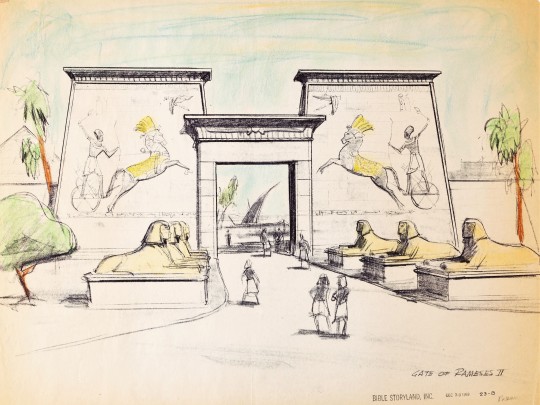




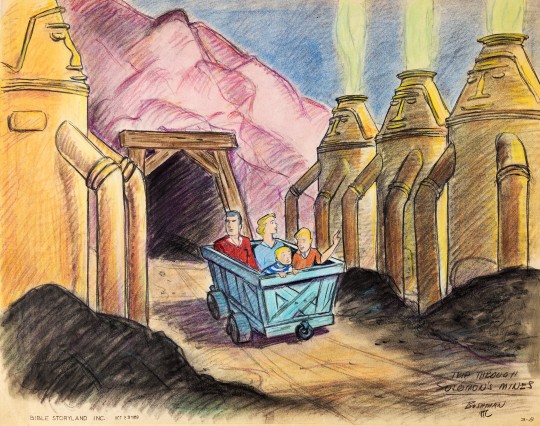
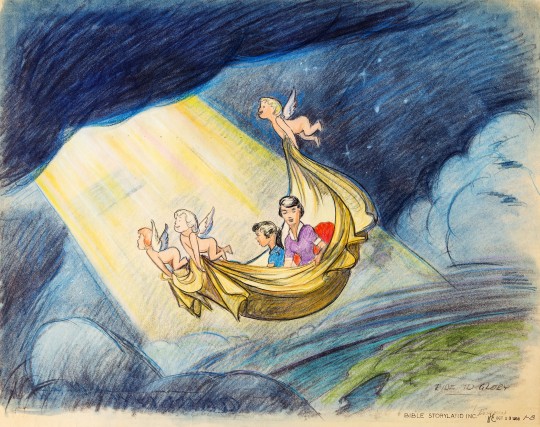

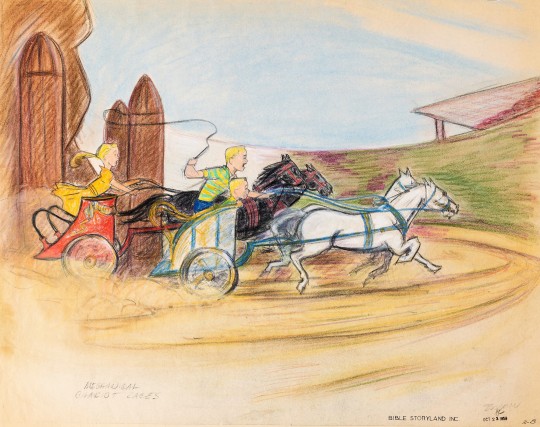
Bible Storyland amusement park concept art by Bruce Bushman (1959)
#bruce bushman#bible storyland#concept art#amusement parks#dark rides#rameses ii#valley of the kings#king tut's tomb#dead sea#ur bazaar#king solomon's mines#chariot races#nat winecoff enterprises#1950s#1959
46 notes
·
View notes
Quote
Slowly, desperately slowly it seemed to us as we watched, the remains of passage debris that encumbered the lower part of the doorway were removed, until at last we had the whole door clear before us. The decisive moment had arrived. With trembling hands I made a tiny breach in the upper left hand corner. Darkness and blank space, as far as an iron testing-rod could reach, showed that whatever lay beyond was empty, and not filled like the passage we had just cleared. Candle tests were applied as a precaution against possible foul gases, and then, widening the hole a little, I inserted the candle and peered in, Lord Carnarvon, Lady Evelyn and Callender standing anxiously beside me to hear the verdict. At first I could see nothing, the hot air escaping from the chamber causing the candle flame to flicker, but presently, as my eyes grew accustomed to the light, details of the room within emerged slowly from the mist, strange animals, statues, and gold—everywhere the glint of gold. For the moment—an eternity it must have seemed to the others standing by—I was struck dumb with amazement, and when Lord Carnarvon, unable to stand the suspense any longer, inquired anxiously, “ Can you see anything ? ” it was all I could do to get out the words, “Yes, wonderful things.” Then widening the hole a little further, so that we both could see, we inserted an electric torch.
Howard Carter, The Tomb of Tutankhamun (1923), pp. 95-96
#tutankhamun#tomb of tutankhamun#howard carter#kemet#ancient kemet#egyptology#discovery of king tut#discovery of king tut's tomb#king tut#tut#king tut's tomb
7 notes
·
View notes
Video
youtube
The Power of Curses ~ King Tut's Tomb, the Hope Diamond
Time Stamps: King Tut's Tomb: 00:29 The Hope Diamond: 3:14
0 notes
Video
youtube
The Power of Curses ~ King Tut's Tomb, the Hope Diamond
Time Stamps: King Tut's Tomb: 00:29 The Hope Diamond: 3:14
0 notes
Text

Why just argue with each other when you can dance AND argue? Two for the price of one!
Everyone thinks they're arguing but in all actuality they've stopped tying to one up each other and are now discussing an incredibly niche topic in Detail because I think they both delight in knowing things not many other people do. Same energy as when two people who've sunk years of education into one field and no one ever knows what they're talking about. They're probably talking about the finer points of the history of puppetry or something and having an absolute ball. Alastor has just mentioned a tidbit about puppets being used in Ancient Egypt in entombment, to come to life as concubines and servants. Lucifer is feeling particularly feral about it.
#my art#hazbin hotel#appleradio#alastor x lucifer#duckiedeer#hazbin alastor#lucifer x alastor#radioapple#they're swing dancing!#Which Alastor probably learned from Vox#And delights in doing with other partners just to piss him off#vindictive not-actually-your-ex-you're-just-delusional#petty alastor is life he's so real for that#background? sounds fake#it's good to note that the tomb of king tut was discovered in 1922 and 'egyptomania' heavily inspired art deco and flapper styles
106 notes
·
View notes
Text



























Happy King Tut Day!
#KingTutDay celebrates the date of the discovery of Egyptian King Tutankhamen's Tomb. With this being the 100th anniversary of that discovery!
Over 3,000 years ago, King Tutankhamen became the King of Egypt at the age of 9. He died at the age of 19. "King Tut" as he is commonly referred to had his tomb discovered on November 4, 1922.
In retrospect Tutankhamen was not an especially important or memorable king; his tomb, however, was the only royal burial found completely intact by archaeologists. This allowed archaeologists to accurately record what an Egyptian king's tomb looked like and learn more about Egyptian Antiquity.
Dr. Howard Carter later recalled, “At first I could see nothing, the hot air escaping from the chamber causing the candle flame to flicker, but presently, as my eyes grew accustomed to the lights, details of the room within emerged slowly from the mist, strange animals, statues, and gold –everywhere the glint of gold”.
26 notes
·
View notes
Text

King Tut’s Iconic Death Mask Was Intended for Someone Else
Research from the University of York points to an "overlooked clue" hiding in plain sight.
Tutankhamun’s death mask is one of the most-recognized images around the globe. Measuring 21 inches tall, inlaid with a detailed mosaic of precious stones, and featuring a 5.5 lb golden beard, the artifact is surely one of the world’s most iconic objects. But researchers think that the pharaoh’s ears may be hiding a secret in plain sight.
The death mask was found in 1925 by the Egyptologist Howard Carter during his excavations of Tutankhamun’s tomb which his team rediscovered in 1922 in the Valley of the Kings near the city of Luxor. Carter’s records are kept at the University of Oxford’s Griffith Institute which was established 17 years after Carter first discovered Tutankhamun’s tomb as the center for Egyptology at the university, named after the university’s first Professor of Egyptology, Francis Llewellyn Griffith.
Tutankhamun, known as the “Boy King,” came to the throne aged just nine and ruled Egypt for around nine years between ca. 1332 and 1323 BCE. He was riddled with ailments including scoliosis and a cleft palate, thought to be due to his parents being brother and sister.


But new research out of the University of York suggests that the mask was not originally designed for the young Pharaoh, and was instead intended for a regal female burial—perhaps Tutankhamun’s stepmother Queen Nefertiti who died before Tutankhamun, though no specific date for her death is known. This theory hinges on one key detail of the death mask: Tutankhamun’s pierced ears.
Piercings were typically only found on the death masks of female rulers and children. Lead researcher Professor Joann Fletcher said in a documentary for History Hit in 2022 that “research suggests that the King wouldn’t have worn earrings beyond childhood, so by the age of 20 when he died he would not have been portrayed with pierced ears” calling the pierced ears of the mask a “long-overlooked feature”.
When compared, the gold used on the face of Tutankhamun is entirely different to the gold used on the rest of the mask, suggesting—as Fletcher put it—that Tutankhamun’s face was “effectively grafted on” to the pre-existing mask of a previous—and likely female—ruler.



There is no doubt, however, that the likeness is of King Tut, as the likeness of a death mask was considered imperative should the person’s soul be able to be reunited with their body for judgement by the god of funerary practices and guide to the underworld, Anubis, after their death.
“I was sure the death mask was not specifically designed for King Tut”, Fletcher said.
Fletcher suggests that the originally intended recipient of the mask could be the Pharaoh Nefertiti, who married and ruled alongside Tutankhamun’s father Pharaoh Akhenaten. This theory was first proposed in 2015 by the British Egyptologist Nicholas Reeves. There is scholarly debate about whether Nefertiti ruled as pharaoh on her own for a short time between her husband’s death and Tutankhamun ascending to the throne. Nefertiti���s tomb has never been discovere
The reason for this make-do-and-mend approach to the burial of, at that point, the most powerful and wealthy man in Egypt may be due to the suddenness of his death, aged around 19. Theories on Tutankhamun’s cause of death have included murder, but it is currently believed that he passed away from malaria and an infection the young ruler developed after a serious chariot crash which left him with a broken leg at the time of his burial. The lack of preparation for this death may have led to the decision to alter a pre-existing mask rather than commission a new one from scratch. Other details suggesting that Tutankhamun’s burial was hurried were patches of paint on the walls of his tomb which would have still been wet when the tomb was sealed.
The mask is kept in the Grand Egyptian Museum in Cairo, which re-opened last month after an 11 year delay.
By Verity Babbs.

#King Tut’s Iconic Death Mask Was Intended for Someone Else#King Tut#King Tutankhamun#Boy King#Howard Carter#Valley of the Kings#ancient tomb#ancient grave#gold#gold mask#ancient artifacts#archeology#archeolgst#history#history news#ancient history#ancient culture#ancient civilizations#ancient egypt#egyptian history#egyptian art#ancient art
40 notes
·
View notes
Text
The 'Golden Throne' of Tutankhamun
The luxurious armchair is distinguished by the complexity of its technique and an abundance of details.
Its colors have not faded over three thousand years, which serves as a testament to the high skill of the ancient Egyptian craftsmen.
The royal throne is made of wood, covered with gold and silver. It is ornamented with semi-precious stones and colored glass.
Two projecting lions’ heads protect the seat of the throne while the arms take the form of winged uraei or rearing cobras wearing the double crown of Egypt and guarding the cartouche names of the king.
The throne is called (Ist) in Egyptian hieroglyphs after the name of the mother goddess Isis, who was usually depicted bearing a throne on her head as her characteristic emblem.
The golden throne was discovered in 1922 by the British archaeologist Howard Carter (1874-1939).
It was found beneath a hippopotamus funerary bed in the antechamber of the Tomb of Tutankhamun (1341-1323 BC), New Kingdom, late 18th Dynasty; Valley of the Kings, Luxor, Egypt.
The throne was meant not only the link between the worlds of Gods and the people, but also majesty, stability, safety, and balance.
Since kings were considered Gods on earth, it may not be difficult to imagine Tutankhamun imposing his divine will over the rest of mortals while sitting on this golden throne.
On the back of the throne, it depicts Queen Ankhesenamun holds a salve-cup and spreads perfumed oil on her husband’s collar in a typical Amarna style scene; sun disc Aten shines above royal couple.
At the time it was made, their names were Tutankhaten and Ankhespaaten.
The scene shows one of the most famous and intimate scenes in art history: the young king appears sitting and being regaled with an ointment by his wife Ankhesenamun.
The king wears a composite crown and a broad collar, while the queen wears a diadem.
The bodies and wigs of both of them are inlaid with exquisite colored glass and their linen robes are silver.
📍: Egyptian Museum, Cairo
🎥: © unlimitedluxor / IG
#Tutankhamun#Ancient Egypt#King Tut#royal throne#golden throne#armchair#Egyptian hieroglyphs#hieroglyphs#Isis#Howard Carter#Tomb of Tutankhamun#Valley of the Kings#Luxor#Egypt#gods#divine will#Queen Ankhesenamun#Aten#Tutankhaten#Ankhespaaten#ancient civilizations
21 notes
·
View notes
Text

SUMMARY: Free-spirited archaeologist Danny Fremont is certain that if found, King Tut's Emerald Tablet would hold the power to control the world. Unfortunately, the only one who believes Fremont is his nemesis archaeologist Morgan Sinclair, a member of a secret society who wants the tablet to harness unspeakable evil on the world and will stop at nothing to get it.
mod L has very fond memories of finding this on a back shelf at the local video rental place. yet another experience we lost to the streaming revolution.
#the curse of king tut's tomb (2006)#monster#mummy movie#2000s#united states#north american movie#horror#movie#poll#more than 50% havent heard
16 notes
·
View notes
Text
Little Riddler and Batman panel redraw of King Tut’s Tomb. (Not unburied universe cause my dumbass didn’t google Bruce)

#riddler#Edward Nygma#Batman#Gotham#rogues gallery#dc#dc comics#THIS IS NOT FROM UNBURIED JUST A PANEL REDRAW OF A COMIC#King tuts tomb#Batman confidential
46 notes
·
View notes
Text

Bad movie I have The Curse of King Tut's Tomb
#The Curse of King Tut's Tomb#Casper Van Dien#Jonathan Hyde#Leonor Varela#Steven Waddington#Niko Nicotera#Tat Whalley#Brendan Patricks#Patrick Toomey#Malcolm McDowell#Simon Callow#Tom Alter#Rajesh Balwani#Robin Das#Parvin Dabas#Nikita Anand#Shakeel Khan#Vikrant Chaurasia#Vir Das#Suvarchala Narayanan#Tony Mirrcandani#Theron D'Souza#David Schofield#Rajesh Kumar#Ulhas Tayad#Harsha Prasad#Ram Gopal Bajaj#Anupam Shyam#Mehul Nisar#Ajit Kelkar
17 notes
·
View notes
Text

Studied the original photo of the finding of king Tuts tomb. The photo looks so inspiring! Finding something from a world thousands of years ago is only that one can dream of...
#king tut#tutankamon#king#history#art#digital art#digital painting#sarcophagus#concept art#game art#hatshepsut#tomb#gold#treasure#national geographic#ng#ancient egypt#egypt#procreate#illustration#museum#archeology
36 notes
·
View notes
Text




Buried in his jammies 🎶
#king tut#tutankhamun#tomb#mummy#born in arizona moved to babylonia#cute they had the blanket up to his chin so you cant see where his head snapped off when they tried to remove him from his coffin#egypt#vacation#personal#iron maiden#powerslave#gpoy#selfie#me
7 notes
·
View notes
Photo
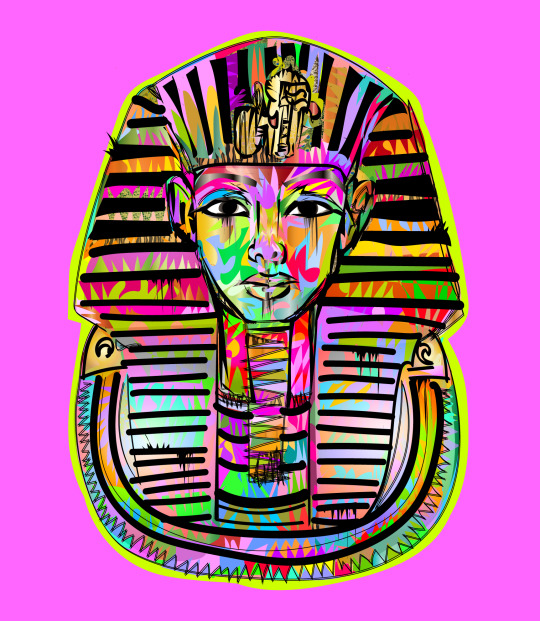
KING TUT TOMB
#king tut#tomb#pyramid#gold#book of the dead#energy#electricty#moon#toth#osiris#ra#eye of horus#hours#chronos#time#technodorme1#ancient egypt#history#knowledge
31 notes
·
View notes
Text
Nikola: I'm in.
Will: Can we trust you?
Nikola: Not usually. But I'd rather not have the world taken over by angsty trust fund vampires.
#nikola tesla#will zimmerman#incorrect quotes#incorrect sanctuary quotes#source: curse of king tut's tomb#i speak#mine#had to change this one a little bit but#yeah
17 notes
·
View notes
Text
Seeing a Large Cat

I have begun reading #9 in the Amelia Peabody mysteries, "Seeing A Large Cat". In the early part of the book, they mention Theodore Davis. Emerson refers to him as a "wealthy dilettante". While Davis was not an actual archaeologist or Egyptologist, he was important in the world of Egyptian archaeology. Davis discovered artefacts relating to Tut. He believed, though, that there were no more relics to be found, once he found the items. Here is the whole story:
#Theodore Davis#King Tut#tutankhamun#artefacts#egypt#ancient egyptian artifacts#egyptian history#egyptology#Valley of the Kings#Howard Carter#Howard Carter-Theodore Davis Partnership#history#archaeology#ancient history#Tuthmosis IV’s tomb#burial tombs#readingamelia#Amelia Peabody mysteries#Elizabeth Peters#Barbara Mertz
8 notes
·
View notes